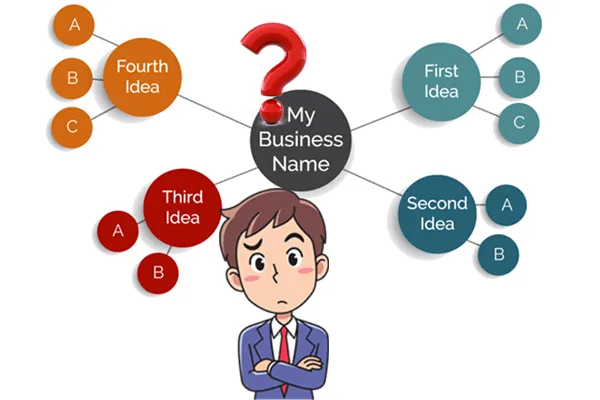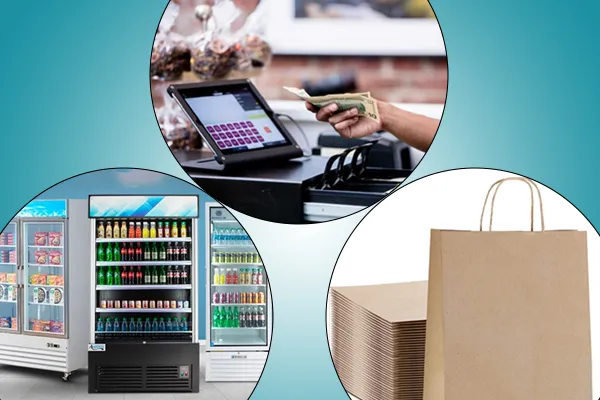How to Start a Grocery Store? (Easy to Understand Guide)
Grocery stores sell food and other household items. They sell kitchen utensils, disposable items, cleaning materials, candy, soft drinks, self-care items, and many other important products.
As we know that people always need food and with an increase in population, food requirements are also increasing. In the USA, there are almost 63,348 supermarkets and grocery stores, and the number is still increasing. If you are thinking of starting a grocery store, it will be a profitable business.
Big chains are dominating the grocery store industry, but still, there is room for small and independent grocers to thrive. Local people often prefer small local stores that provide essential local products like dairy products, bakery items, fresh fruits, and vegetables that large superstores don’t carry.
Starting a grocery store is a huge undertaking and it requires a lot of time and hard work. You must have knowledge of the industry and what’s required for developing your business. You need a complete plan of action and process to follow.
This article will guide you through the complete process of opening a small grocery store so that you can start a business you will be proud of.
Write a Business Plan
There is an old saying that “A goal without a plan is just a wish”. So, you must make a clear, simple, and quality plan to start a business that can successfully run.

It’s important to research thoroughly about your business and make a complete setup in your mind that how your business can reach where you want it to be after some time. Here’s how you can write a business plan for your grocery store.
1. Write An Executive Summary
Firstly, you must make an executive summary of each section of your plan. You should give an overview of the grocery industry and how to fit in the market including industry analysis and market trends.
2. Decide the Type of Store
Then you should decide what type of store you want to open, either a traditional store or to target a specific community and which customer segments are you going to serve. Customers of different ages want different things from grocery stores, and they respond differently to promotions and marketing.
3. Conduct Customer and Competitors Analysis
According to your business, find a perfect location where you can get more customers. Also find out the average income of your neighborhood, the average age, and the number of residents.
Find out your direct and indirect competitors in the surroundings of your location and how to set yourself apart. You would also have to factor in general grocery shopping statistics such as the fact that the average age of most grocery shoppers in the USA is around 44 years old.
Also, think of your competitive advantage and how you can create a good environment for shoppers of different ages.
4. Finalize Operating Hours, Pricing, and Promotions
Decide the suitable operating hours for your business according to its location and customers. For example, your store may be appropriate for morning customers near the bus station. Here, you should also include pricing, promotion, and goals.
5. Examine Financial statistics
Now, make a complete financial plan. Calculate how much investment will you need and where your revenue will come from. Include the income statements, balance sheets, and cash flow statements. Here also try to find how much profit you can earn according to the investment.

6. Name Your Business
Think of an appropriate name for your store. It’s very important and challenging to choose a name for a store. You can use a name relatable to your store type or use your own name.

You can also use social media platforms to find a name for your store or utilize a business name generator Whatever you do, put a lot of thought into this process as naming your store is a critical part of the entire process.
So this is a complete overview to write a business plan for yourself. You can further add when you will write your own business plan.
Get Your Business Legally Registered
It’s a crucial step to establish a legal entity. Your choices will impact your tax and liabilities exposure. You must be familiar with all the laws and regulations. The following are the legal entities for a small grocery store owner:

1. Sole proprietorship
This is a single owner who owns an unincorporated business by himself or herself. The owner is 100 % responsible for the business.
2. Partnerships
This is a business relationship existing between two or more persons. Each of them contributes to the business and they share the profits and losses. The taxes are the same as the sole proprietorship.
3. Limited liability company (LLC)
The owners are called members and memberships are not restricted by most states. LLC is the best option because it protects you from liability if someone sues your store.
Owners can avoid paying corporate taxes and can be taxed on profits only. They can make their own decisions and conduct their business as they wish.
Getting your business registered signifies the legitimacy of your business and secures your reputation in the business industry and in your country. Further, the government supports them and lets them know more information about the industry.
Set up Your Business Bank Accounts
After registration of your business structure, obtain an Employee Identification Number (EIN) from the IRS, so that you can register for federal and state taxes. You will need a business bank account and credit account for your store to protect your personal assets.
It’s important to open a separate business account from your personal account to keep your personal assets secure. Otherwise, there’s a risk of your business being sued.

Business credit helps to get credit cards and other financings in business, and it also helps to get better interest rates. Net 30 accounts will help you to establish and build business credit.
You can buy goods for your store and then repay the balance within thirty days. In addition to a business bank account, you may need other banking services for your grocery store, such as a credit card merchant account, a line of credit, or a business loan. Talk to your bank about the services they offer and how they can help your grocery store grow.
Many banks offer online banking services, which allow you to manage your account and transactions online. Set up online banking to access your account information, pay bills, and make transfers.
It’s crucial to keep records of various expenses and sources of income so that you can understand the financial performance of your business. You must keep accurate and detailed accounts to simplify your annual tax filing.
Remember to compare the fees and terms of different banks before choosing a business bank account for your grocery store. This can help you find the best account for your needs and ensure that you’re not paying more than you need to for banking services.
Necessary Permits and Licenses
To start a small business, you need to get the necessary permits and licenses. These licenses are different for different states. The permits and licenses required to start a grocery store may vary depending on the location and the specific regulations in your area.

You will need to check your state’s licensing requirements and reach your state’s small business association (SBA). Then you will more likely need a retail food store license and permits from the Department of Health if you are going to serve prepared food.
You will also need General Liability Insurance to protect against accidents inside and outside your store. Workers’ Compensation Insurance will provide financial assistance and medical care to the employees working in your store.
Other permits include sales tax permits, building permits, and food handlers’ permits. Failing to obtain the necessary permits and licenses can result in fines or even the closure of your store.
Purchase the Required Equipment for Your Store
You require a lot of equipment when you open a grocery store. Some equipment depends on the type of products you have but some necessary items for any supermarket or grocery shop include

You can further think of the things you want to buy for your store needs depending upon the type of products you will sell.
Craft a Brand Identity for Your Store
Your brand identity includes all the essential elements associated with your brand. To create a brand identity, you must decide what you want your brand to say.
Either you will focus on natural and organic products or locally sourced meats and cheeses. You need consistency, clarity, and character to create a strong brand identity.
These steps should be followed to craft a brand identity for your store:
You can successfully create a strong brand identity for your store by following these steps.
Make A Website For Your Store
If you’re planning on making a website for your grocery store, there are several steps you can take to ensure that the website is effective and meets the needs of your customers.
Here are some suggestions:
By following these steps, you can create a website that effectively promotes your grocery store, increases sales, and provides customers with a positive online shopping experience.

Market Your Grocery Store
Marketing your grocery store can be a great way to attract new customers and retain existing ones. It’s one of the important steps required for a successful business.
Here are some marketing strategies that you can use:
By implementing these marketing strategies, you can increase awareness of your grocery store and attract new customers while retaining existing ones.
Create a Good Customer Experience
Creating a good customer experience is important for any business as it can lead to customer satisfaction, loyalty, and repeat business.
Here are some tips for creating a good customer experience:
Grow Your Business
Growing a business can be challenging, but there are several steps you can take to increase your chances of success.
Here are some tips:

Remember that growing a business takes time, effort, and persistence. You must stay focused on your goals, and be willing to adapt and evolve as needed. You can never succeed in any business without working hard.
Conclusion
Starting a grocery store business involves several key steps, including finding a location, securing funding, selecting products to sell, and hiring staff. It’s important to conduct market research and develop a business plan to ensure that the store is viable and sustainable.
Other important considerations include managing inventory, pricing products competitively, and providing excellent customer service. So, starting a grocery store can be challenging but it’s rewarding.
By following the steps discussed above and putting in the hard work and dedication necessary to launch and grow a successful grocery store, you can create a profitable and fulfilling business that serves your community’s needs.

